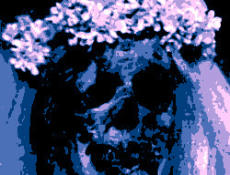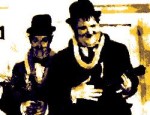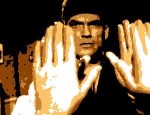Film Review
Twice-Told Tales look like a
pretty desperate attempt by a rival company to climb aboard the horror
bandwagon that AIP had set in motion with its inspired adaptations of
the works of Edgar Allen Poe. This time, it is Nathaniel
Hawthorne who provides the stories, including two from his anthology of
the film's title and one from his novel
The House of the Seven Gables,
which had previously been adapted by Joe May in 1940, with Vincent
Price in the lead role. Price not only narrates
Twice-Told Tales, he also takes the
lead in each of its three tales, an indulgence that helps to brighten
what might otherwise have been a pretty lacklustre offering in the horror genre.
To be fair, the production design is on a par with Roger Corman's memorable
offerings for AIP but Corman's directorial flair is noticeably
missing. Sidney Salkow directs the film without any real
enthusiasm for horror and merely turns out an attractively shot period
drama which is lacking in both atmosphere and genuine chills. What horror
content there is is laughably tame, the kind you would expect to find
dangling with embarrassment from a peg in a joke shop. The third story (
House of the Seven Gables) is
particularly disappointing and resembles a poor man's version of AIP's
House of Usher (1960), complete
with amateurish effects and cheap plastic skeletons. The second
tale,
Rappaccini's Daughter,
is far more successful, a warped version of the
Tristan and Isolde story that succeeds in
spite of its obvious staginess. Here, Price gives a surprisingly
subtle performance as a character who is not (in stark contrast to the
others he plays in this film) a one-dimensional villain.
Twice-Told Tales is pretty feeble
compared with AIP's similar horror offerings but, judged on its own
merits, it is entertaining enough, its only real sin being its woefully
unimaginative direction and a few let-downs on the special effects front.
© James Travers 2014
The above content is owned by frenchfilms.org and must not be copied.
Film Synopsis
Three tales of terror. In
Dr
Heidegger's Experiment, an elderly scientist named Carl Heidegger
discovers that his fiancée, who died 38 years previously on the
eve of her wedding, is perfectly preserved in her vault.
Heidegger attributes this miracle to the water that drips onto her
coffin from the vault's damp ceiling. When they imbibe the water,
Heidegger and his lifelong friend Alex are both instantly rejuvenated,
and the scientist even succeeds in bringing back to life his long dead
beloved. All too soon this happy reunion ends in horror as
past secrets are revealed... In
Rappaccini's Daughter, a university
student falls in love his neighbour's daughter, only to discover that
she has been turned into a monster whose merest touch brings
death... In
House of the Seven
Gables, Gerald Pyncheon returns to the family home to recover a
valuable treasure hidden in its vault. He scorns the legend of a
curse that threatens death to any Pyncheon who claims ownership of the
house...
© James Travers
The above content is owned by frenchfilms.org and must not be copied.



